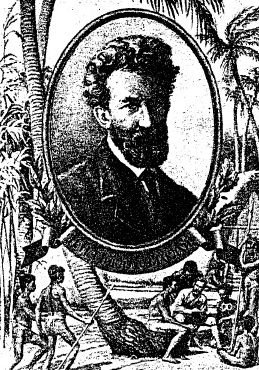Abstract
Key words: Asia-Pacific; maritime cross-cultural exchange; barter; piracy; sea nomads.
This paper is devoted to the problem of change and stability in cross-cultural exchange patterns in the region of the Sulu and Celebes Seas. The main interest to the region is connected with the more wide study of Austronesian speakers’ common cultural patterns. The specific forms of cross-cultural exchange are among them. Discussing exchange activity in the Sulu and Celebes Seas region the current interdisciplinary study focuses on such its pristine forms as barter, and piracy. The purpose of the paper is to give a hypothetical answer on the question why in present reality the region is characterized by stability of such pristine way of cross-cultural exchange. Literature which was used for the study includes world and local news; academic and popular articles; area studies monographs, researches in international politics and cultural anthropology.
It is supposed that the main reason for those pristine forms of cross-cultural exchange stability in the Sulu and Celebes Seas region is a long term absence of any strong political power there. From the period of the first sea nomads’ migration, probably around 10,000 years ago, and until now the Sulu and Celebes Seas region remains a grey area, occupied by small competing groups of inhabitants. One type of those groups very likely is represented by the descendants of those sea nomads, who in the period of their migration in the region were in the Mesolithic stage of development. Till now several ethnic groups live there in nomadic and semi-nomadic way. At the same time from the prehistoric times those nomadic and semi-nomadic ethnic groups were involved in barter form of cross-cultural exchange with the ethnic groups of another type. That second type of ethnic groups, which engaged the dominant position with reference to the sea nomads, combines mainly agricultural way of life with sporadic seafaring expeditions, which resulted in development of such forms of cross-cultural exchange as barter, raids and piracy. Historically the targets of their raids varied from the nomadic groups to the agriculture-seafaring groups of the same type and to the subjects of colonial powers in colonial period. Very likely, that type of ethnic groups preserves the early Melanesians’ Neolithic- and Malays’ Bronze-level cultural patterns. It is supposed, that the early Melanesians and Malays brought into Malay Archipelago such cultural patterns as the domestic pig, agricultural techniques, betel-chewing, sea-going outrigger and composite canoes, ceremonial cannibalism and headhunting, human sacrifice, highly ritualized warfare, secret societies with graded membership, men’s club-houses, and more complex social organization. Later Islamization of those two types of ethnic groups didn’t bring much change in their everyday life. Muslim tiny Sultanates, which started to appear in the Sulu and Celebes Seas region from 14th century were not powerful enough to control intergroup relationships and their cross-cultural exchange traditions. European colonial powers of Spanish, Dutch and British also were not successful to change that behavior. New formed nation-states of Indonesia , the Philippines , Malaysia , and Brunei
Igor Sitnikov
Igor Sitnikov











No comments:
Post a Comment